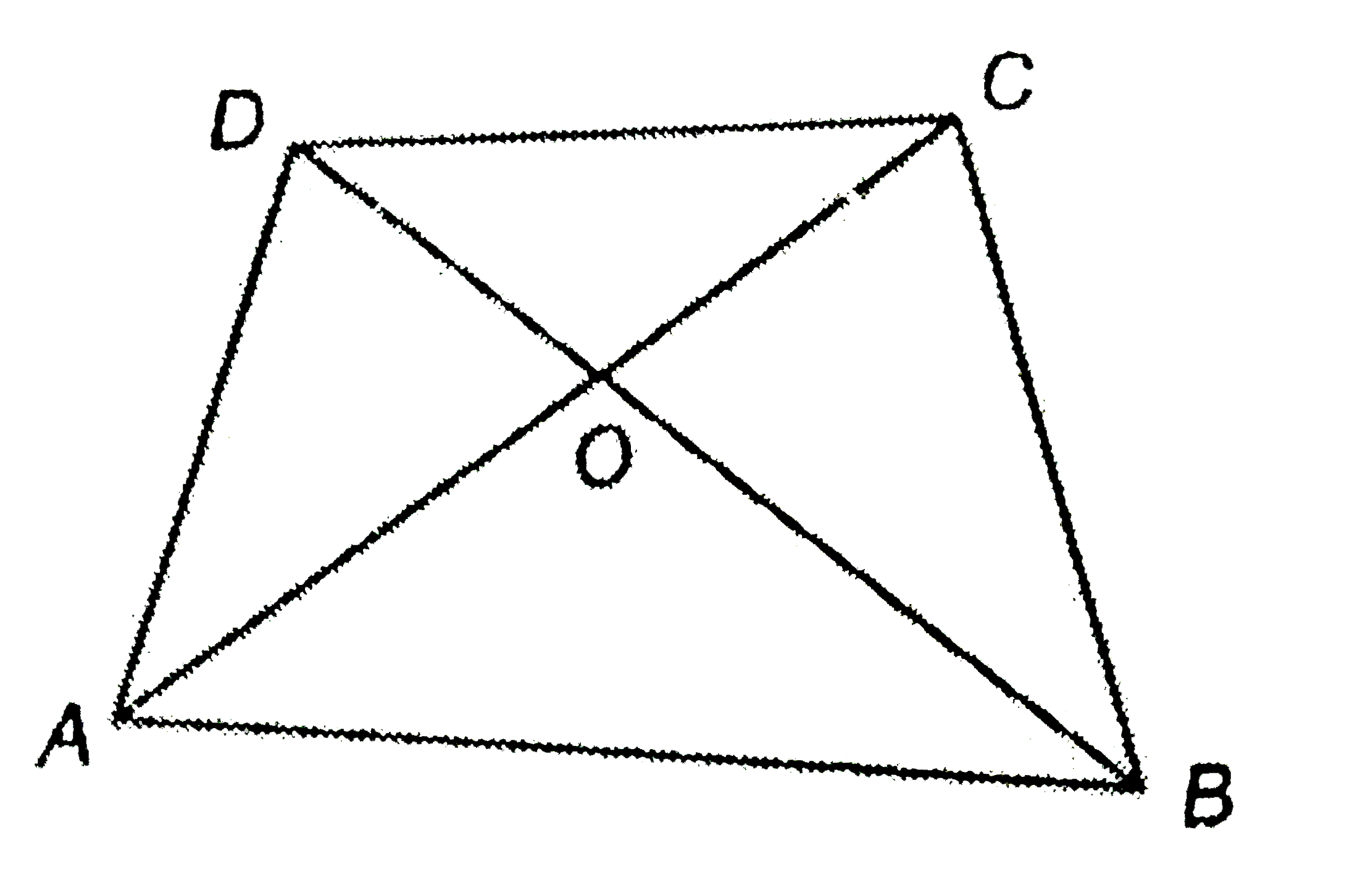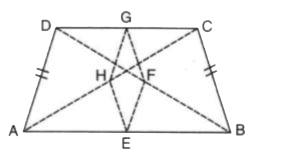ABCD is quadrilateral. Is AB+BC+CD+DA<2(AC+BD)?
To prove that AB+BC+CD+DA<2(AC+BD) for quadrilateral ABCD, we will use the properties of triangles formed by the diagonals AC and BD.
1. Identify the Quadrilateral and Diagonals:
- Let ABCD be a quadrilateral with diagonals AC and BD intersecting at point O.
2. Form Triangles:
- The diagonals divide the quadrilateral into four triangles: △AOB, △BOC, △COD, and △AOD.
3. Apply the Triangle Inequality:
- For each triangle, we will apply the triangle inequality which states that the sum of any two sides of a triangle is greater than the third side.
- For △AOB:
OA+OB>AB(1)
- For △BOC:
OB+OC>BC(2)
- For △COD:
OC+OD>CD(3)
- For △AOD:
OD+OA>DA(4)
4. Add the Inequalities:
- Now, we will add all four inequalities together:
(OA+OB)+(OB+OC)+(OC+OD)+(OD+OA)>AB+BC+CD+DA
5. Simplify the Left Side:
- Combining the left side gives:
2OA+2OB+2OC+2OD>AB+BC+CD+DA
- This can be rewritten as:
2(OA+OB+OC+OD)>AB+BC+CD+DA
6. Relate to Diagonals:
- Notice that OA+OC=AC and OB+OD=BD. Therefore:
OA+OB+OC+OD=OA+OC+OB+OD=AC+BD
- Thus, we can substitute:
2(AC+BD)>AB+BC+CD+DA
7. Final Conclusion:
- This shows that:
AB+BC+CD+DA<2(AC+BD)
- Hence, we have proved the required inequality.
- Let ABCD be a quadrilateral with diagonals AC and BD intersecting at point O.
- The diagonals divide the quadrilateral into four triangles: △AOB, △BOC, △COD, and △AOD.
- For each triangle, we will apply the triangle inequality which states that the sum of any two sides of a triangle is greater than the third side.
OA+OB>AB(1)
OB+OC>BC(2)
OC+OD>CD(3)
OD+OA>DA(4)
- Now, we will add all four inequalities together:
(OA+OB)+(OB+OC)+(OC+OD)+(OD+OA)>AB+BC+CD+DA
- Combining the left side gives:
2OA+2OB+2OC+2OD>AB+BC+CD+DA
- This can be rewritten as:
2(OA+OB+OC+OD)>AB+BC+CD+DA
- Notice that OA+OC=AC and OB+OD=BD. Therefore:
OA+OB+OC+OD=OA+OC+OB+OD=AC+BD
- Thus, we can substitute:
2(AC+BD)>AB+BC+CD+DA
- This shows that:
AB+BC+CD+DA<2(AC+BD)
- Hence, we have proved the required inequality.
Topper's Solved these Questions
- THE TRIANGLE AND ITS PROPERTIESBOOK - NCERT ENGLISHCHAPTER - THE TRIANGLE AND ITS PROPERTIESEXERCISE - EXERCISE 6.5
8 Videos
- THE TRIANGLE AND ITS PROPERTIESBOOK - NCERT ENGLISHCHAPTER - THE TRIANGLE AND ITS PROPERTIESEXERCISE - EXERCISE 6.1
1 Videos
- THE TRIANGLE AND ITS PROPERTIESBOOK - NCERT ENGLISHCHAPTER - THE TRIANGLE AND ITS PROPERTIESEXERCISE - SOLVED EXAMPLES
6 Videos
- SYMMETRYBOOK - NCERT ENGLISHCHAPTER - SYMMETRYEXERCISE - EXERCISE 14.2
2 Videos
Similar Questions
ABCD is a quadrilateral. Is AB+BC+CD+DA>AC+BD?
View SolutionIf ABCD is a quadrilateral such that AB = AD and CB = CD , then prove that AC is the perpendicular bisector of BD.
View SolutionIn the adjoining figure, ABCD is a quadrilateral. Its diagonals AC and BD intersect at point 'O'. Prove that :
(a) AB+BC+CD+DA<2(AC+BD)
(b) AB+BC+CD+DA>(AC+BD)

View SolutionABCD is a quadrilateral in which AB=BC and AD=CD ,Show that BD bisects both the ∠ABC and ∠ADC.
View SolutionABCD is a quadrilateral in which AB=AD . The bisector of BAC and CAD intersect the sides BC and CD at the points E and F respectively. Prove that EF||BD.
View SolutionABCD is a quadrilateral in which AD = BC. E, F, G and H are the mid-points of AB, BD, CD and AC respectively. Prove that EFGH is a rhombus.

View SolutionIn the adjoining figure, ABCD is a quadrilateral. M and N are the points on AD and CD respectively such that AB=BC,∠ABM=∠CBN and ∠MBD=∠NBD. Prove that BM=BN.

View SolutionABCD is a quadrilateral in which AB||DC and AD = BC. Prove that ∠A=∠Band∠C=∠D.
View SolutionShow that in a quadrilateral ABCD AB+BC+CD+DA>AC+BD
View SolutionShow that in a quadrilateral ABCD AB+BC+CD+DA<2(BD+AC)
View Solution
